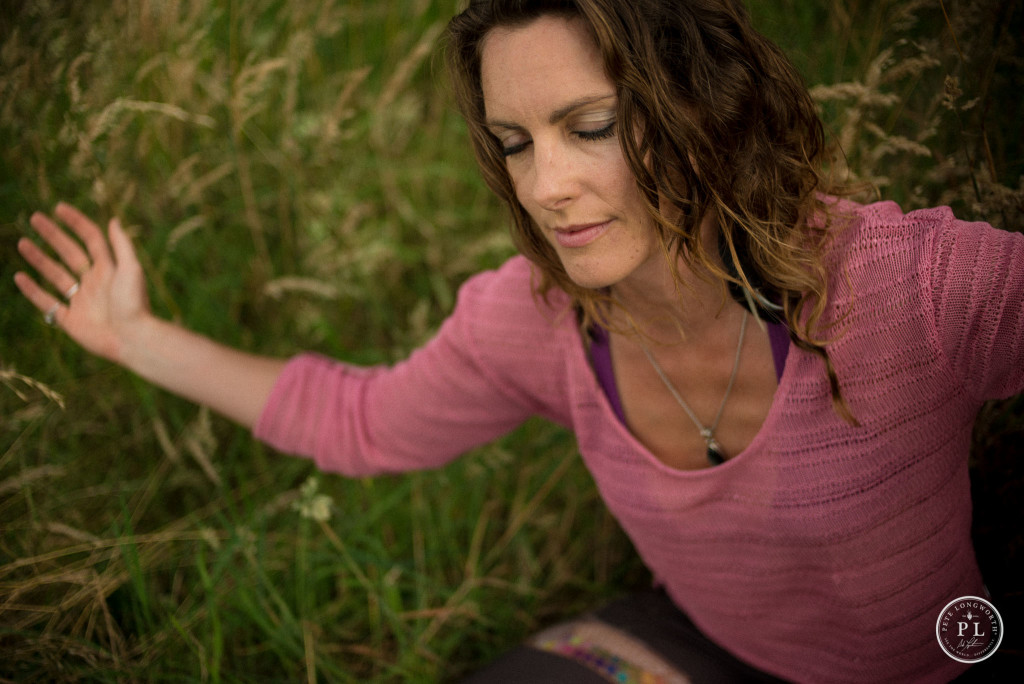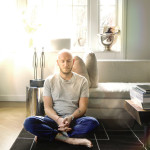by Kara-Leah Grant
Let’s get technical, technical, I wanna get technical… Let me hear your ego rock…
OK fellow yoga students. Here’s the deal. The word ‘Yoga’ gets bandied about all over the place, but it’s rarely defined. We assume that we all know what we’re talking about, but often we’re talking about different things.
First up, physical postures are not Yoga. They are called ‘asana’. When you go to what is commonly called ‘a yoga class’, you are likely attending an asana class. You are learning how to do postures with your body.
These postures are a tool of Yoga. Ah… but then what is Yoga?
I’m going to further define what most of us think of as Yoga as Classical Yoga. Classical Yoga is a system of self-realisation that was codified by Patanjali sometime around 200 – 500 AD in a text called The Yoga Sutras. When I refer to Yoga in this article, I’m referring to Classical Yoga.
The Yoga Sutras lays out eight limbs, or aspects, of practice which lead one to realise a state of Yoga. In this context, Yoga becomes a final state which one experiences as a result of practice. That state is in defined in Chapter 1 Verse 3 of the Sutras as Self-Realization:
Then the Seer abides in Itself, resting in its own True Nature, which is called Self-Realization. Yoga Sutras 1.3
What is Self-Realization? It is also known as enlightenment. This is a place where the fluctuations of the mind have mostly stilled, and you no longer identify with any remaining fluctuations or thoughts.
Have I lost you yet?
Think of it this way.
Your mind thinks thoughts. Most of us identify with our thoughts. We think that we ARE our thoughts. We have a depressed thought; WE are depressed. We have a happy thought; WE are happy. Our thoughts are the puppet master, pulling us this way and that way. Yoga is mastery of your thoughts, where they no longer control you. YOU are in charge.
Self-realisation is the place where you drop down deep beneath your thoughts. You may have a depressed thought, but YOU are not depressed. You may even have a happy thought, but YOU are not happy. Instead, you are resting in your own True Nature, which is unbounded consciousness. (Sometimes this is called Sat-Chit-Ananda, but that’s another article.)
This is Yoga – a state of Self-Realization.
However Yoga is also the practice required to experience Yoga. That is, it is the things that one does to shift from identifying with our thoughts to witnessing our thoughts. This includes but is not limited to asana.
Other practices identified in the Yoga Sutras as part of the practice of Yoga include observing the yamas and the niyamas, pranayama, withdrawal of the senses, intense focus and meditation.
Yoga is the control (nirodhah, regulation, channeling, mastery, integration, coordination, stilling, quieting, setting aside) of the modifications (gross and subtle thought patterns) of the mind field. Yoga Sutras 1.2
You can translate this Sutra as Yoga is the Mastery of the Mind. That’s the simple version. I like that.
So where does this leave us then? What is Yoga?
It is both an end-point on the journey – Self-Realization – and the practices one uses to travel that path. It includes asana, but is not limited to asana.
In fact, it is entirely possible to practice asana without practicing Yoga at all.
One can be focused on doing the physical postures without using them as a tool to observe the fluctuations of the mind.
This is the entire point of Yoga – to work with the mind, recognising that it is the greatest obstacle preventing us from knowing our true nature.
Here is a concrete example.
I recently worked with a student who is recovering from an injury. This student came to me because they wanted a specific sequence that would aid their recovery. As we spoke, it became clear to me that the injury itself was pointing back to the way this student’s mind was working.
Yes, I could have given the student a physical asana sequence and sent them on their way. They would have got what they wanted and been happy.
However, I would have missed an opportunity to teach yoga. Instead, I drew the student’s attentions to the fluctuations of their mind. Through my observations and questions, the student was able to ‘see’ their mind, when before, they had been identified with the thought streams.
Now, I still gave the student a sequence to work with. More importantly though, I gave them clear instructions on how to relate to the postures while doing them. Now the student is practicing yoga. They are using asana as a way to observe the fluctuations of their mind.
This is where the role of the teacher becomes vital in the practice of Yoga. Students are usually not able to see the fluctuations of their mind when they begin practicing.
Like the fish swimming in water, the mind is invisible because they are completely identified with it. The role of a yoga teacher is to teach in such a way that the student learns how to witness their mind, and then how to work with what they are witnessing.
Many asana teachers are not walking the path of Yoga and so are not able to offer this level of teaching to their students. They haven’t been taught in this way, nor do they practice in this way. Perhaps this is because of a lack of desire, perhaps it is because of ignorance. You don’t know what you don’t know.
However, if you teach asana and you want to teach Yoga, it is important to understand how to foster a state of Yoga within your students. How do you teach in a way that supports students in dis-identifying with their mind? How do you help them shift into a state of witnessing the mind?
First, you need to practice this. When you do asana, you need to be witnessing the fluctuations of your own mind. You need to catch yourself when you’re identifying with your thought streams and learn how to drop back down into unbounded consciousness. Then, when you can do this yourself, you are able to assist other people to do it too.
It requires constant practice – what Patanjali calls abhyasa.
Practice (abhyasa) means choosing, applying the effort, and doing those actions that bring a stable and tranquil state (sthitau). Yoga Sutra 1.13
That is – when you choose to witness your mind while doing asana, over time you will spontaneously drop into a stable and tranquil state.
Where you are situated shifts – no longer trapped in mind, you find yourself in consciousness. You find yourself conscious.
If you are a student who has been practicing asana and you would like to practice Yoga, seek out teachers who teach Yoga. Start to witness your mind the moment you step onto your yoga mat. Internally, imagine that you are dropping down, or stepping back. Imagine that your thoughts are up on a big movie screen fifty feet in front of you. Then stop giving those thoughts any more energy.
Instead, bring your focus to your breath. Feel yourself inhaling. Feel yourself exhaling. Feel where your inhale goes in your body. Feel where your exhale goes in your body. As you feel your breath, observe what thoughts arise, but let them go immediately and come back to you breath. Inhaling, exhaling, inhaling, exhaling.
Ponder, where do you go when no thoughts arise? That is the Yoga.
So next time you hear someone talking about yoga, stop them; ask – are you talking about the practices that lead one to Self-Realization or Enlightenment? Or are you talking about physical postures? Yes, postures can lead to Yoga, but they aren’t always yoga.
Let’s get technical, technical
I wanna get technical
Let’s get into technical
Let me hear your ego talk, your ego talk
Let me hear your ego talk



Nice Piece Kara – This explanation of the word Yoga is from our Teacher Training manual
“The word Yoga has two Sanskrit roots; the first from yuj samadhau meaning concentration, to have an unbroken and constant connection to the object of thought. The second root is from yujir yoge meaning union or “to yoke”. Union is realized through the awareness and constant identification of the soul as the true nature.
Hanuman Das
Yoga means “Union” or “to Join” or “to Unite”. Yoga is not about just Asanas and Pranayama. If you just work on Asanas and Pranayama, yoga is not effective. You need to add other aspects of Yoga like Yama, Niyama and Pratyahar Yoga has following eight parts.
1) Yama
2) Niyama
3) Asana
4) Pranayama
5) Pratyahar
6) Dharana
7) Dhyan (Meditataion)
8) Samadhi
Step 1 to 5 is Hatha Yoga. Step 1, 2, and 5 to 8 is Raja Yoga. Root of Yoga is from Vedas. Upanishad is the summary of Vedas. You may get reference of Yogshikhopanishad. You will find the description on Asanas and Pranayama. Step i to 5 prepares you for the better meditation.
The 8 limbs are based on Patanjali’s yogasutra. Before that, there was the six-fold path from the Upanishads. And before that would be what I see as true yoga and that is Tantra with various schools of thought like Kashmir Shaivism. Patanjali’s work feels more like Brahmin oriented “yoga” and is the point where corruption really began to manifest.
The traditional meaning of the word YOGA is understood from the viewpoint of Patanjalee’s sootra. Jainism , however, speaks of an entirely different theme, a different concept of Yoga, involving the SUM OF THE INSTRUMENTS (THOSE CAUSING INFLUX OF KARMA) IN THE HUMAN BEING, NAMELY – MANA or mind, VACANA or speech and KAAYAA or body, with the individual action of each being known as MANOYOGA, VACANAYOGA & KAAYAYOGA respectively. The nearest we can bring the two different definitions is when we speak of MEDITATION and KAAYOTSARGA. A BASIC KNOWLEDGE OF THE JAIN PHILOSOPHY helps one to understand the exact meaning of YOGA in Jainism.
It’s a great read. I also started practicing yoga a few months back, and want to gather more knowledge about it so started exploring, thanks, but this article really helps..